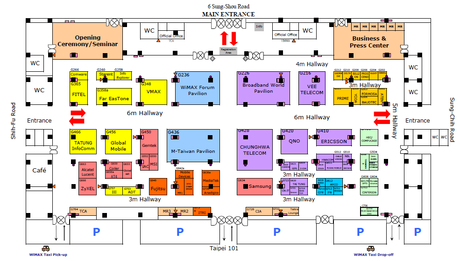One of the most critical aspects of crafting a successful marketing strategy is a thorough understanding of event demographics. Event demographics refer to the statistical characteristics of the audience that your event aims to attract. By analyzing these demographics, you can tailor your marketing efforts to resonate more effectively with your target audience, ensuring higher engagement and attendance.

Importance of Event Demographics
- Targeted Marketing Efforts:
- Precision in Campaigns: By identifying the specific demographics of your audience, you can create targeted marketing campaigns that speak directly to their interests and preferences. This precision increases the likelihood of attracting attendees who are genuinely interested in your event.
- Resource Optimization: Understanding your audience allows for better allocation of marketing resources, ensuring that efforts are concentrated on channels and messages that yield the highest return on investment.
- Enhanced Engagement:
- Personalized Experience: Tailoring event content and experiences to match the preferences of different demographic groups can significantly enhance attendee satisfaction and engagement.
- Effective Communication: Demographic insights enable you to craft communication strategies that resonate with your audience, from the language and tone used in promotional materials to the platforms selected for outreach.
- Informed Decision-Making:
- Content Planning: Knowing the demographics of your audience helps in planning event content that is relevant and appealing. For instance, younger audiences might prefer interactive and tech-driven experiences, while older demographics might value more traditional formats.
- Logistics and Operations: Demographic information can inform decisions about venue selection, scheduling, and other logistical aspects to better suit the preferences and convenience of your target audience.
Key Demographic Factors
- Age:
- Different age groups have varying preferences and expectations. Understanding the age distribution of your potential attendees helps in designing appropriate content and activities. For example, millennials might be more attracted to social media promotions and interactive sessions, while baby boomers might prefer detailed brochures and formal presentations.
- Gender:
- Gender demographics can influence the type of content and marketing channels used. Tailoring your message to address the specific interests of different gender groups can improve engagement. For instance, events focused on fashion or wellness might see higher female attendance, guiding the tone and style of marketing materials.
- Income Level:
- Income demographics affect the pricing strategy and the overall budget planning for the event. High-income groups might be more willing to pay for premium experiences, while budget-friendly options could attract wider attendance from lower-income groups.
- Education Level:
- The education level of your audience can influence the complexity of the content and the formality of the event. Highly educated audiences might appreciate in-depth discussions and expert panels, whereas a broader audience might prefer accessible, easy-to-understand content.
- Geographic Location:
- Knowing where your audience is coming from helps in planning the venue and timing of the event. It also assists in localizing marketing efforts and creating region-specific promotions to attract local attendees.
- Interests and Preferences:
- Beyond basic demographics, understanding the specific interests and preferences of your audience allows for highly customized event experiences. Surveys, social media analytics, and past event data can provide valuable insights into what your audience is looking for.

Applying Demographic Insights
- Customized Marketing Messages:
- Use demographic data to create customized marketing messages that resonate with different segments of your audience. For instance, younger audiences might respond better to casual, dynamic language and visuals, while older audiences might prefer a more formal and informative approach.
- Channel Selection:
- Select marketing channels that align with the preferences of your target demographics. Social media platforms, email newsletters, and traditional media should be chosen based on where your audience is most active and receptive.
- Content Strategy:
- Develop content that caters to the interests and expectations of your audience. This could include tailored sessions, workshops, and activities that appeal to specific demographic groups.

- Feedback and Continuous Improvement:
- Collect feedback from attendees to refine your understanding of your audience and continuously improve future events. Post-event surveys and data analysis can provide valuable insights into what worked and what can be improved.
In conclusion, a deep understanding of event demographics is fundamental to successful event marketing. By leveraging demographic insights, you can create targeted, engaging, and effective marketing strategies that not only attract but also delight your audience, ensuring the success of your events.



